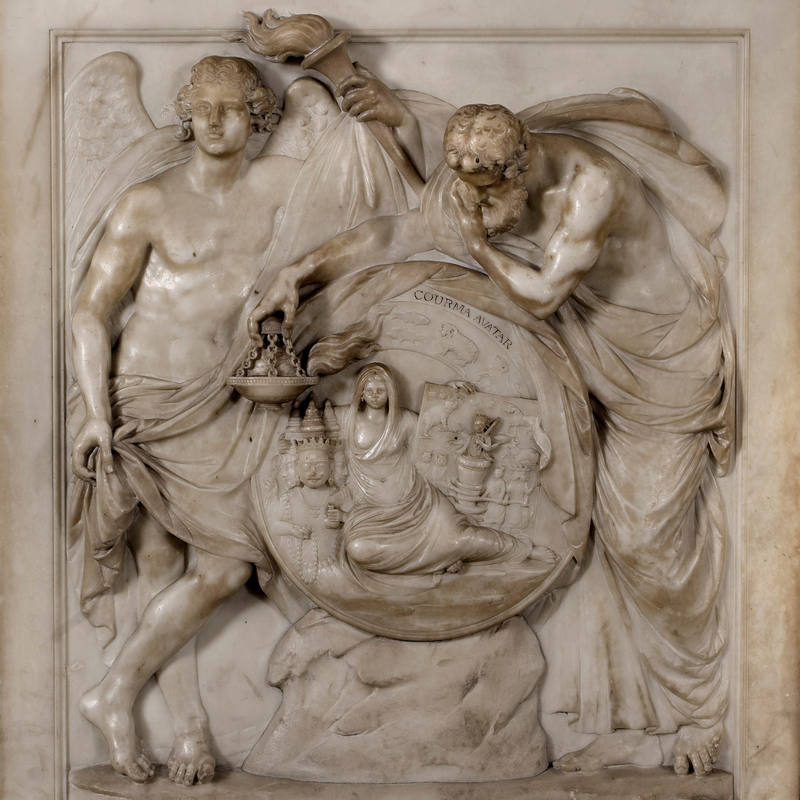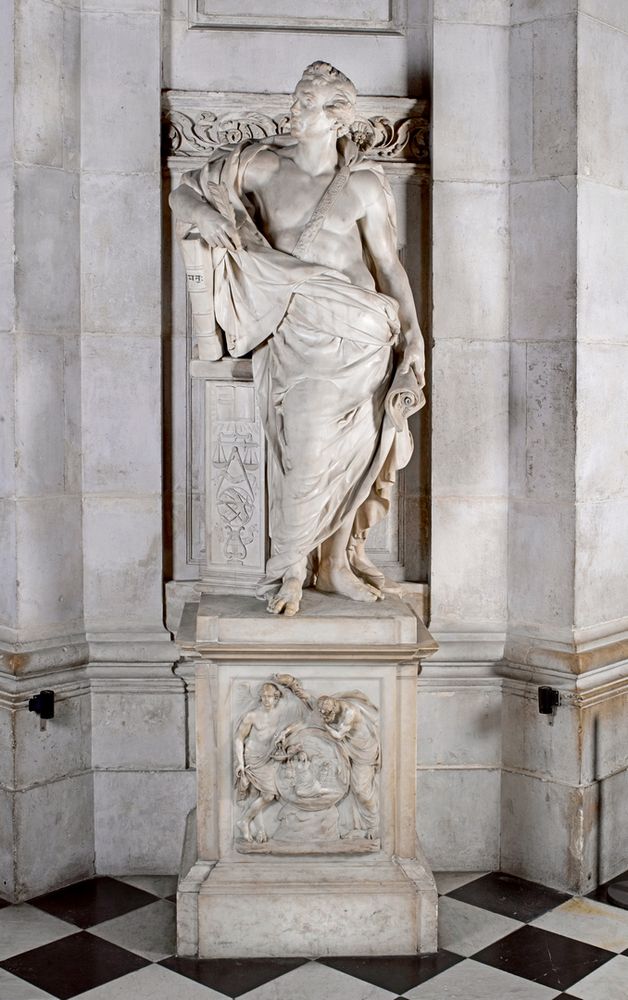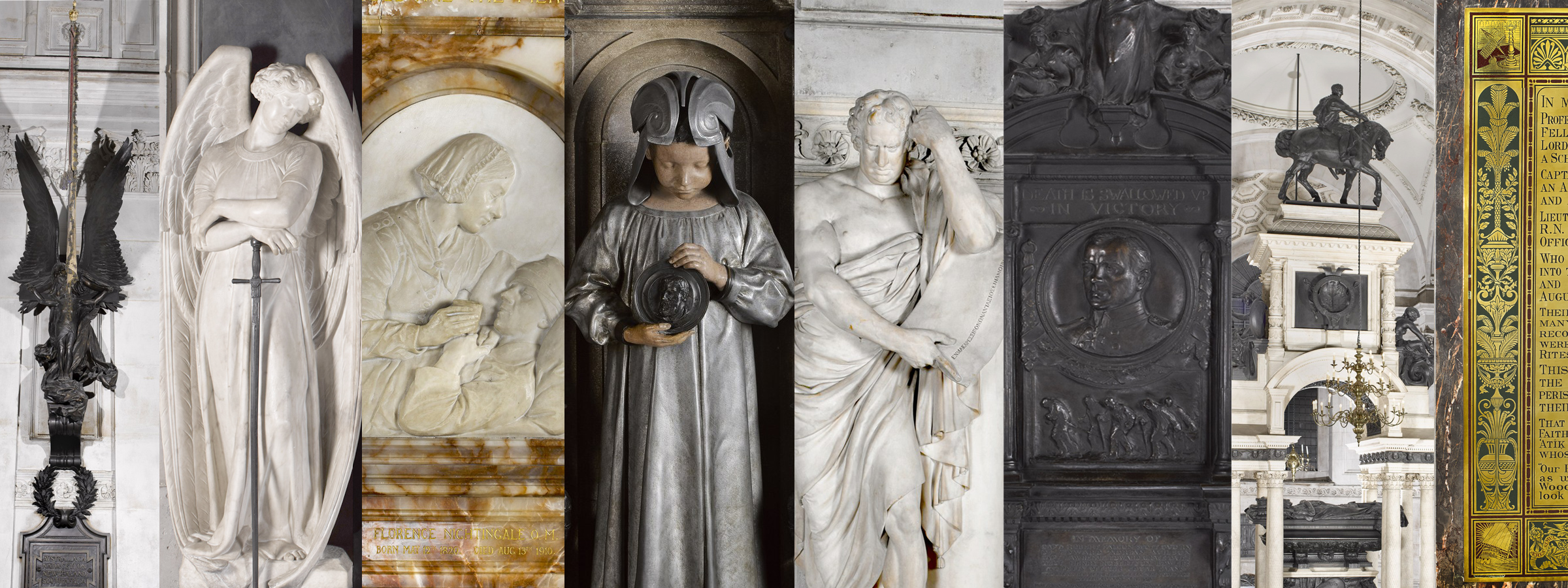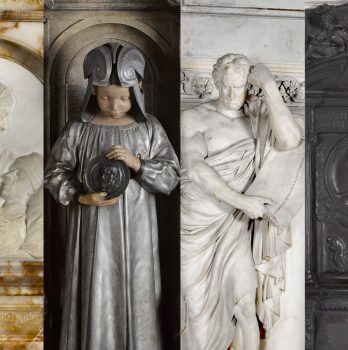‘The Curtain’: Poet Pádraig Ó Tuama’s Response to the Monument to Sir William Jones, by John Bacon the Elder, 1799


Transcript
by Pádraig Ó Tuama
My name is Pádraig Ó Tuama and I’m a poet from Ireland. I was delighted to be asked by St Paul’s to respond to this sculpture of William Jones with a poem. The sculpture’s done in marble, completed in, I think, 1799; and the artist is John Bacon the Elder.
William Jones had a real interest in languages and a natural ability with them, but he was less interested in European languages and much more interested in Persian and Sanskrit. He studied law and made a great study of comparative law between England and India, where he’d moved. And in the statue, you see that he’s holding a book, which is a representation of his engagement with Indian scholars on law. But the sculpture has a hint towards cultural exchange, too, and learning and betterment that isn’t about empire, even though it was an era of empire.
At the bottom of the sculpture, there’s a curtain held open; and through the curtain, we see some figures from the Hindu triumvirate: Brahma is the first god of the Hindu triumvirate, the creator; and then we also see Kurma avatar, an incarnation of Vishnu, the preserver. It’s interesting that Shiva, the destroyer, is absent; and I like to think that it is a recognition from British empire that European powers had destroyed — but not in a way that the Hindu religion would have honoured the power of destruction from Shiva. This art is implying that there is a lot to learn before you can see the dignified, deified imagination of the god of destruction.
And looking at the curtain, I found myself thinking of how it was that it was William Jones who was being educated — that he was being converted into better ways of thinking — and that the depictions of the Brahma and the Kurma avatar are looking out, not with the idea of missionizing. I’m curious about what those deities see through the curtain and what their invitations are.
So, here’s the poem. It’s called ‘The Curtain’.
The Curtain
Not a border
or a tear.
Not a limitation.
Not a risk,
a dare
or a discovery.
There is no
finding here.
There is no
saving.
There is an
open curtain —
someone looking
at your looking.

About Pádraig Ó Tuama
Pádraig Ó Tuama is a poet and theologian from Ireland who brings interests in language, religion and conflict to his work.
Visit Pádraig Ó Tuama’s website and find him on Facebook, Instagram and Twitter.
About the Monument
Sir William Jones (1746–1794) was a renowned philologist who knew 28 languages to a varying degree by the time he died in Calcutta (now Kolkata) at the age of 47.
In 1783, Jones was appointed as a judge to the supreme court in Bengal, where he immersed himself in the study of local languages and culture. He founded the renowned Asiatic Society in 1784 and published widely. His interests are represented on his monument in St Paul’s in the detail sculpted on both the plinth on which the over-sized figure of William Jones leans and the pedestal, with its representation of Hindu deities and scripture.
His monument in white marble, by John Bacon the Elder (1740–1799), was one of the first four to appear on the cathedral floor, along with Samuel Johnson, Sir Joshua Reynolds and John Howard.


